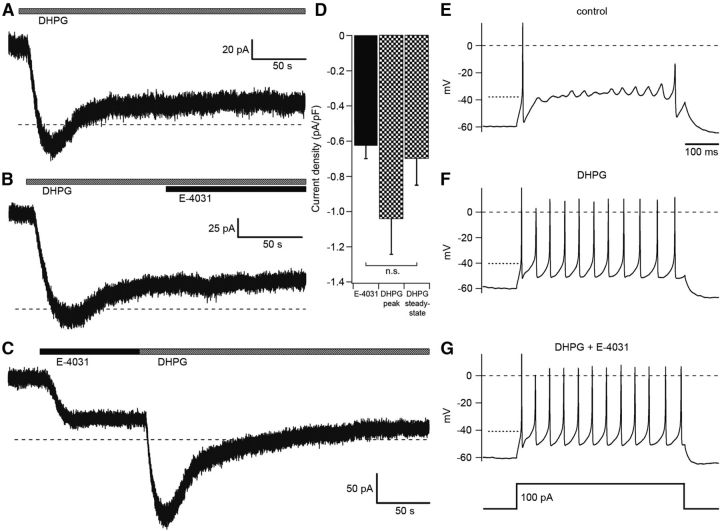Figure 11.
Erg current contributes to the DHPG-induced biphasic current response. A–D, Purkinje cells were voltage-clamped at −40 mV. External solution, 5 mm K+ without Ca2+. A, Application of DHPG (50 μm, gray bar) induced a biphasic current response. B, Application of E-4031 (5 μm) during the sustained current component (black bar) did not change the current. C, Application of E-4031 decreased a sustained outward current. Subsequent application of DHPG induced a transient current only. D, Mean amplitudes of the E-4031-sensitive current (black column; n = 13), the peak amplitude of the transient, and the sustained current DHPG-sensitive component (black-and-white columns; n = 5; n.s., not significant; unpaired 2-tailed t test). E–G, Current-clamp recordings during the steady-state component of the DHPG response and ∼200 s after DHPG (50 μm) application. In the presence of DHPG, a depolarizing current injection (500 ms, 100 pA) from a membrane potential of −60 mV decreased the threshold potential and induced repetitive activity. Additional application of E-4031 (5 μm) induced no further significant change in threshold potential and repetitive activity. The dotted line near −40 mV indicates the threshold potential determined with the phase plane plot.

